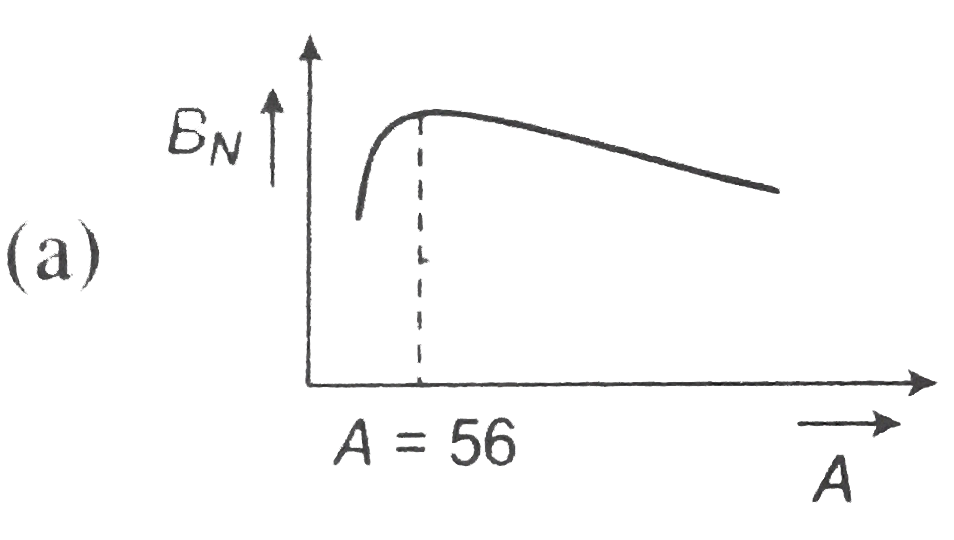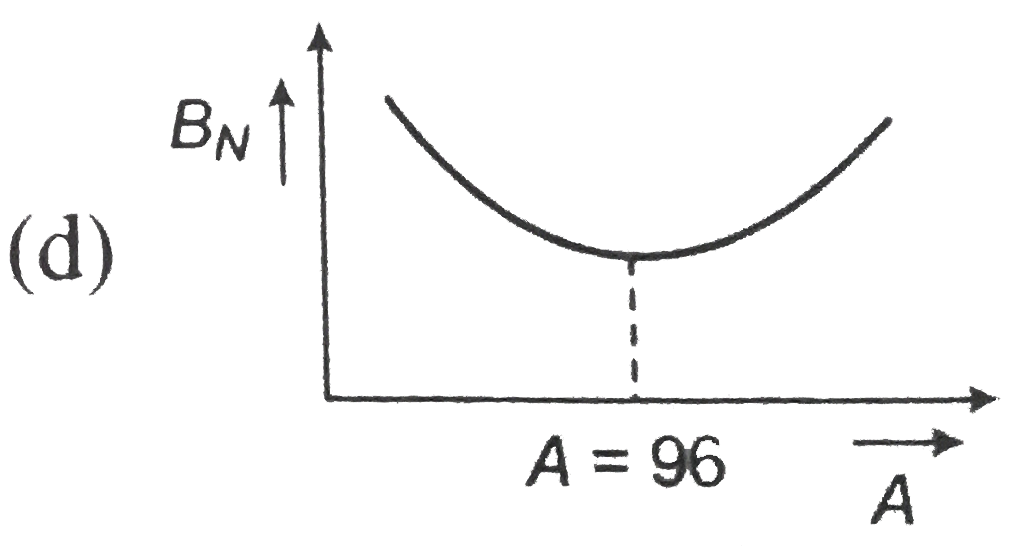The curve of blinding energy per nucleon as a function of atomic mass number has a sharp peak for helium nucleus. This implies that helium.
can easily be broken up
is very stable
can be used as fissionable material
is radioactive
The correct Answer is:B
To solve the question regarding the binding energy per nucleon curve and its implications for the helium nucleus, we can follow these steps:
Step 1: Understanding Binding Energy per Nucleon
The binding energy per nucleon is a measure of how tightly the nucleons (protons and neutrons) are held together in a nucleus. A higher binding energy per nucleon indicates a more stable nucleus.
Hint: Remember that stability in nuclear physics is often associated with higher binding energy per nucleon.
Step 2: Analyzing the Curve
The question states that there is a sharp peak in the curve of binding energy per nucleon as a function of atomic mass number at helium. This suggests that helium has a significantly higher binding energy per nucleon compared to other elements around it.
Hint: Look for the significance of a peak in a graph; it often indicates a point of maximum value.
Step 3: Implications of the Sharp Peak
Since helium has a sharp peak in the binding energy per nucleon curve, it implies that the nucleons in helium are very tightly bound. This tight binding means that helium is a stable nucleus.
Hint: Consider what it means for a nucleus to be "tightly bound"—it relates to how much energy would be required to break it apart.
Step 4: Stability of Helium
Given that helium is at a high point on the binding energy curve, we conclude that it is very stable. This stability means that helium is less likely to undergo fission or other forms of decay compared to nuclei with lower binding energy per nucleon.
Hint: Think about the relationship between stability and the likelihood of nuclear reactions.
Step 5: Final Conclusion
Based on the analysis, we can conclude that the sharp peak in the binding energy per nucleon curve for helium indicates that it is very stable. Therefore, the correct implication is that helium is very stable.
Hint: Revisit the options provided in the question to ensure that your conclusion aligns with the choices given.
Final Answer:
The correct implication is that helium is very stable due to its high binding energy per nucleon.
The binding energy per nucleon is a measure of how tightly the nucleons (protons and neutrons) are held together in a nucleus. A higher binding energy per nucleon indicates a more stable nucleus.
The question states that there is a sharp peak in the curve of binding energy per nucleon as a function of atomic mass number at helium. This suggests that helium has a significantly higher binding energy per nucleon compared to other elements around it.
Since helium has a sharp peak in the binding energy per nucleon curve, it implies that the nucleons in helium are very tightly bound. This tight binding means that helium is a stable nucleus.
Given that helium is at a high point on the binding energy curve, we conclude that it is very stable. This stability means that helium is less likely to undergo fission or other forms of decay compared to nuclei with lower binding energy per nucleon.
Based on the analysis, we can conclude that the sharp peak in the binding energy per nucleon curve for helium indicates that it is very stable. Therefore, the correct implication is that helium is very stable.
The correct implication is that helium is very stable due to its high binding energy per nucleon.
Topper's Solved these Questions
- NUCLEAR PHYSICSBOOK - CENGAGE PHYSICS ENGLISHCHAPTER - NUCLEAR PHYSICSEXERCISE - ddp.5.3
15 Videos
- NUCLEAR PHYSICSBOOK - CENGAGE PHYSICS ENGLISHCHAPTER - NUCLEAR PHYSICSEXERCISE - ddp.5.4
15 Videos
- NUCLEAR PHYSICSBOOK - CENGAGE PHYSICS ENGLISHCHAPTER - NUCLEAR PHYSICSEXERCISE - ddp.5.1
14 Videos
- MISCELLANEOUS VOLUME 5BOOK - CENGAGE PHYSICS ENGLISHCHAPTER - MISCELLANEOUS VOLUME 5EXERCISE - Integer
12 Videos
- PHOTOELECTRIC EFFECTBOOK - CENGAGE PHYSICS ENGLISHCHAPTER - PHOTOELECTRIC EFFECTEXERCISE - Integer Type
4 Videos
Similar Questions
The graph between the binding energy per nucleon (E) and atomic mass number (A) is as-
View SolutionUsing the curve for the binding energy per nucleon as a function of mass number A, state clearly how the release in energy in the processes of nuclear fission and nuclear fusion can be explained.
View SolutionFind the binding energy per nucleon of 79^197Au if its atomic mass is 196.96 u.
View SolutionDraw a plot of the binding energy per nucleon as a function of mass number for a large number of nuclei , 2≤A≤240 . How do you explain the constancy of binding energy per nucleon in the range 30<A<170 using the property that nuclear force is short-ranged ?
View SolutionAssertion : Binding energy per unit nucleon increase in atomic mass number .
Reason : Density of nucleus increases with increase in mass number.
View SolutionDraw the graph showing thervariation of binding energy per nucleon with mass number. Give therason for the decrease of binding energy per nucleon for nuclei with high mass numbers.

The binding energy per nucleon for nuclei with high mass number is low due to the large coulomb repulsion between the protons inside these nuclei.
View SolutionAssertion The binding energy per nucleon, for nuclei with atomic mass number A>100, decreases with A.
Reason The nuclear forces are weak for heavier nuclei.
View SolutionAs the mass number A increases, the binding energy per nucleon in a nucleus.
View SolutionThe dependence of binding energy per nucleon, BN on the mass number, A is represented by.
(a) , (b)
, (b)  ,
,
( c) , (d)
, (d)  .
.
View SolutionThis binding energy per nucleon for the parent nucleus is E1 and that for the daughter nuclei is E2. Then
View Solution
